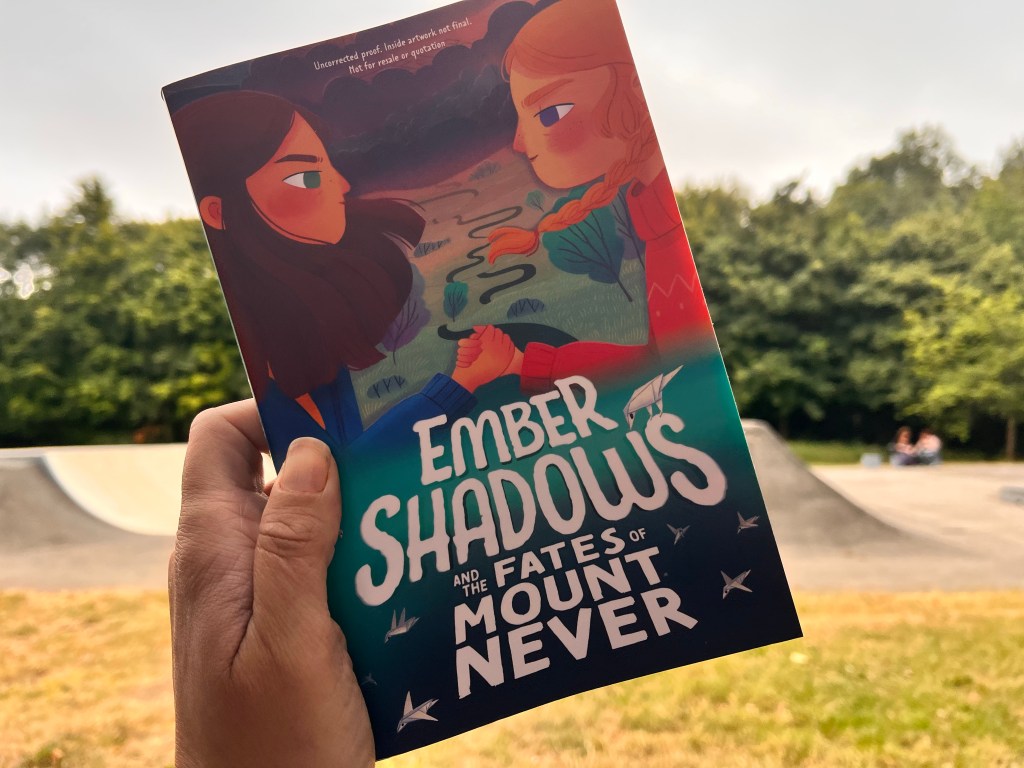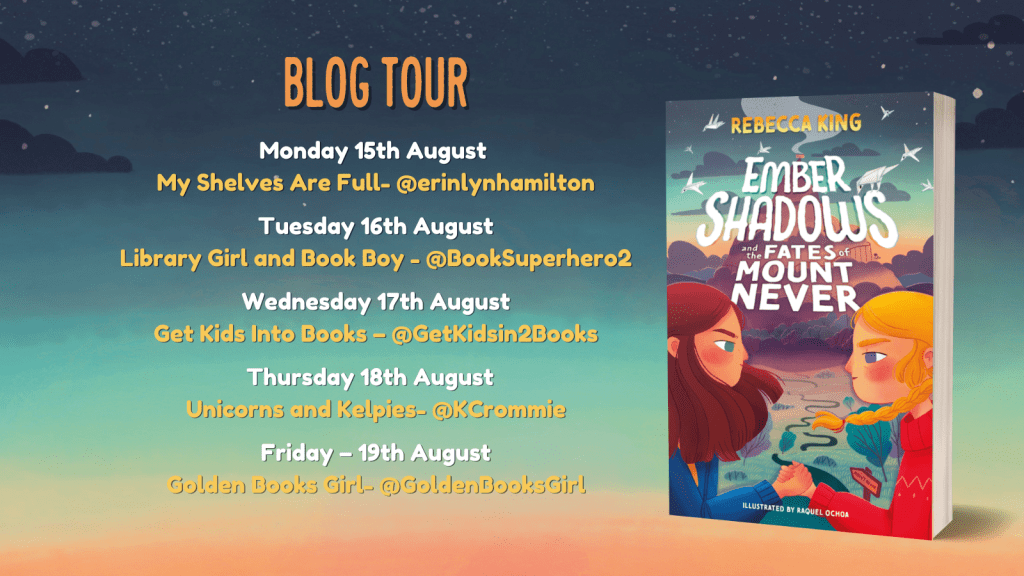I was immediately intrigued by the idea of a person’s fate being decided for them by the time the reach twelve. No wondering if you’ll have children, live to 100, become a brain surgeon…it’s all written done there on your card in black and white. The mystery of that opening chapter completely sucked me in, and I’m sure it will you too!
Make sure you scroll down to read Rebecca’s piece about his she created the wonderful world Ember lives in…

‘In a land trapped by fate, only courage can re-write the future.
In the magical village of Everspring, everyone receives a fate card before their twelfth birthday, sent down from the mysterious Mount Never. It tells them their purpose, their profession and how old they’ll be when they die.
Nearly 12-year-old Ember Shadows has always believed she is destined for great things. But when her fate card arrives, it’s blank. What does that mean? Then, worse still, her sister’s card decrees she will die before her next birthday. No way is Ember’s going to let that happen.
Determined to challenge what – or who – is responsible for these cards, Ember sets off up the mountain, a place no one is allowed to go. She encounters forbidden realms full of magic, trickery and curious creatures. In a thrilling race through a magical landscape, Ember Shadows must uncover the secret behind the fate cards in order to save her sister …
But will Ember like what she finds at the top of the mountain?’
World Building by Rebecca King
As children, we have no problem building an entirely new world almost every day. We pick up a stick and suddenly it’s the key to a tree-trunk portal. An old carton of orange juice becomes a witchy brew capable of sending us to a magical palace. A tiny cupboard transforms into a prison for enchantedbeings.
Lots of people believe that sense of wonder fades as we grow up; the world becomes a place filled with normality and certainty. Maybe for some, but I like to think otherwise. It might not be socially acceptable to come out with bizarre ideas of prison-like cupboards or witchy brews in day-to-day conversation, but if we want to, we can see the potential slivers of magic hiding just out of sight.
That was the how the setting of Mount Never came about for me. I was on the trip of a lifetime in Tibet, staring at the sunset over Mount Everest, in freezing cold conditions when Ifound myself wondering how we could possibly know what was truly on the mountain – there was no way explorers and climbers had covered every inch.
The thought collided with an idea I’d played with for a while about the idea of fate and finding out your destiny. Suddenly, the idea of magical realms each controlling a person’s fate came to me, and I spent the next few weeks plotting out all the different sections there might be.
I started to think about all the parts that could make up a person’s fate. Some parts required their own realms; time, knowledge, talents. Others felt as though they needed to be mixed together, making up the messiness of life. The fun part was deciding how the magic worked. I wanted there to be clear rules around each element, for example the clocks in the Forest of Time determining how old a person would live. But it was important to me that Mount Never still felt surreal and a bit nonsensical to give a sense of freedom and wonder to child readers.
While I was writing, I did have a few doubts. I knew that adults might say, ‘Why would there be a rollercoaster on the mountain?’, whereas for children, it’s more a case of ‘Why not?!’. So I turned to books, as I always do, and remembered the vivid imagination in some of my favourite stories, like Alice in Wonderland, Inkheart, and The House with Chicken Legs. It’s important for the mechanics of magic in stories to have rules, or there is no real struggle and consequence, but adding in a hint of nonsense, bizarre magic and unpredictability to an adventure is what always made these books so enjoyable to me.
The part of Ember’s world that I had the most trouble with was Everspring. I knew that everyone in the community needed to accept the idea of a pre-determined fate. But what sort of place would allow that? It took me a long time to come up with the details of the village and its rules. I wanted Ember’s world to be similar to ours, but not the same, almost existing in parallel. Slowly, as I asked myself questions about the community, details began to emerge, like the shape of their homes, the council system, and the Pre and Post-Card schooling system. Eventually I had more detail than could make it into the book all jotted down in a journal, as well as the village mapped out. During later drafts, my incredible editor helped develop it further, suggesting changing names of animals, books and games to give that sense of other-worldliness.
Together, Everspring and Mount Never work to contrast Ember’s ordinary life with the magic of possibilities and adventure. I hope young readers are inspired by Ember to look a little further into the ordinary and discover something truly magical. More than anything, I hope magical stories like Ember’s encourage them to keep that sense of wonder and imagination long after they’ve grown up.
As I followed Ember on her quest to save her sister, the story’s pace seemed to ratchet up a notch with each passing chapter. Ember’s journey through magical realms (some enchanting and some a little more menacing) and her encounters with some curious characters, reminded me of Alice’s Adventures in Wonderland.
I think readers aged 9+ will enjoy Ember’s inventiveness and determination, and will certainly be wishing for a magical companion of their own. I am hopeful that some even start to consider whether their future is really already mapped out for them and how they might like that to look.
Library Girl.
*Many thanks to Orion Children’s Books for sending me this title to review*

